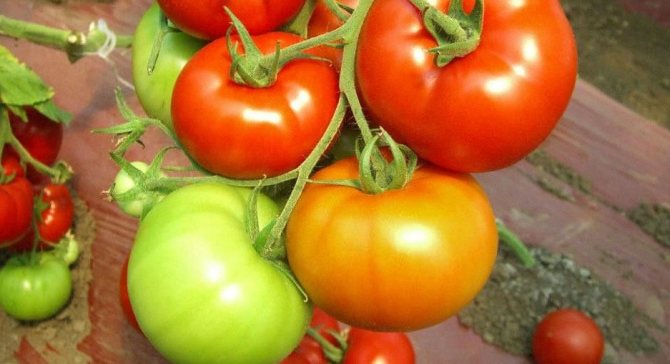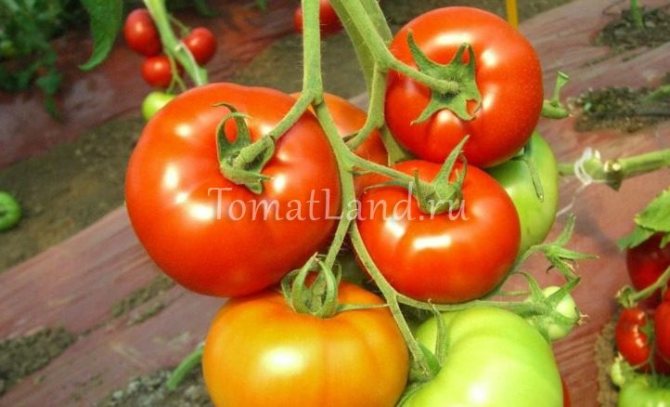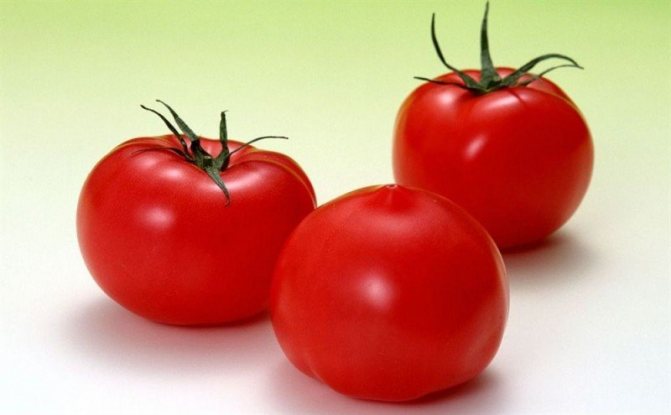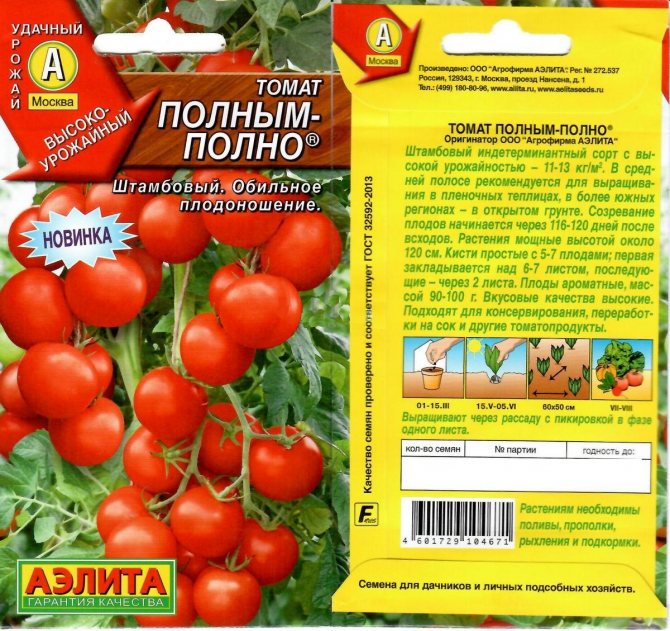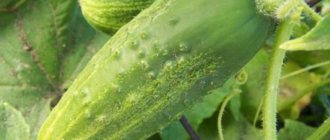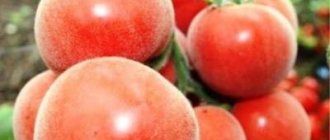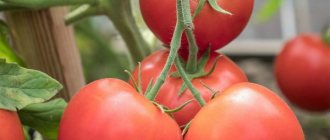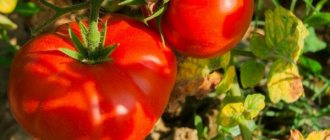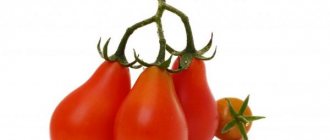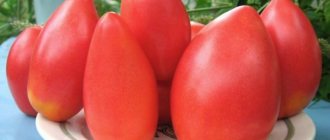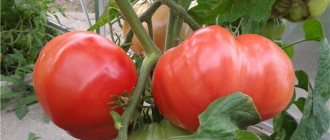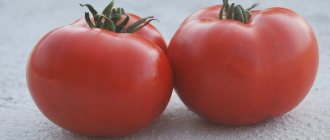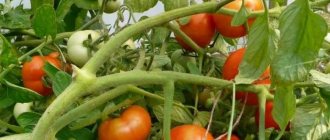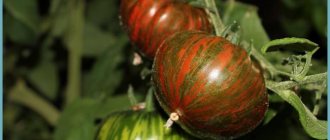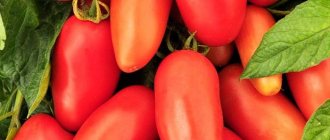Do you want to get an early big harvest of tasty tomatoes? Try growing the Red Red F1 tomato variety in a greenhouse or greenhouse. This high-yielding hybrid will not only delight with its harvest, but also with its disease resistance. Thanks to this, the hassle of caring for plants is much less. In our article, you can study the description and characteristics of Red Red F1 tomatoes, watch a video review of the harvest on the bushes, learn about the peculiarities of growing the variety and read reviews of gardeners.
Characteristics and description of tomato varieties
Known as the Red Red variety, and its hybrid F1. Our story is about the variety, but the article will also be useful to fans of hybrids. The hybrid has similar performance, in addition, it is more resistant to disease.
| Characteristic | Indicator |
| Harvesting speed | An early ripe variety, 90-100 days pass from germination to ripening |
| Where to plant | Suitable for both greenhouses and outdoor cultivation |
| Bush height | 1.5-1.9 m |
| Fruit shape | Rounded, lined, with fluffy shoulders |
| How many fruits grow on the brush | 5-8 pcs. |
| Fruit weight | 200-250 g |
| Disease resistance | Medium (in F1 hybrid - increased) |
Productivity and directions of use of fruits
Subject to the cultivation techniques, summer residents manage to remove 5-8 kg of fruits from one tomato bush.
Red red tomatoes are suitable for:
- fresh consumption;
- making ketchups, lecho, sauces, salads, juices;
- whole-fruit canning, pickling, salting;
- drying, drying and freezing.
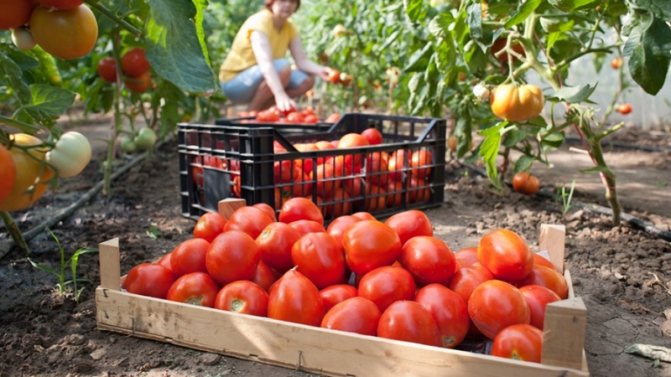
Planting seedlings to a permanent place
Seedlings of tomatoes "Red-red F1" are ready for planting in the ground 2 months after germination. However, landing in the ground is carried out during a period when the threat of frost at night is completely eliminated.
This period differs for different regions, therefore it is recommended to plant a hybrid:
- for warm climates - May-early June;
- for cool regions - the second decade of June;
- for planting in a greenhouse - mid-May.
Did you know? It is believed that ketchup was invented in America, but the dish with this name was brought from China to England in the 17th century. It was prepared from anchovies, nuts and mushrooms, and absolutely did not contain tomatoes.
The bed for planting seedlings is carefully loosened. Further, holes are dug in it in rows for seedlings.
Landing scheme:
- the distance between seedlings is 50–80 cm;
- the distance between the rows is 80-100 cm.
This size is due to the fact that the hybrid grows with growth, and each bush will need access to light for growth and ripening of fruits. Additional space is still needed for the subsequent care of plants: weeding, hilling, watering.
If in the future you form plants into one stem, then you can plant up to 4 bushes per sq. m. The recommended frequency of planting seedlings - 2-3 bushes per 1 square. m.
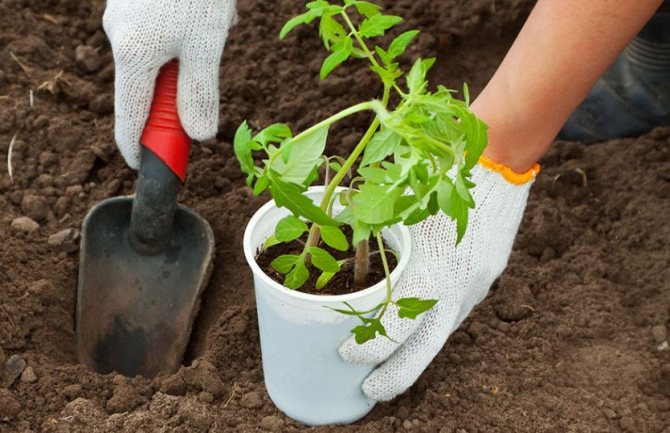

When planting in the hole, you can pour wood ash or superphosphate. Water the soil well. An individual hole is designed for each seedling bush, the depth of which should freely accommodate the root system. Plants are placed in holes, sprinkled with earth, tamped down and watered again.
How to grow
The variety is generally standard in terms of growing technology.
Sowing seeds
Seeds for seedlings are planted in early March (allowed at the end of February).Before planting, it is advisable to keep the seeds in a solution of a growth stimulant, for example, "Epina". The solution is prepared, observing the dosage of the drug from the manufacturer's instructions. The depth of planting seeds in the ground is 1-1.5 cm. It is recommended to moisten the earthen lump well.
Attention! It is better to buy the soil in which the seeds will be planted in a specialized store. If you take land from your beds, there is a risk of infecting the seedlings with diseases and pests from non-disinfected soil.
The container with the planted seeds is covered with plastic wrap to create a microclimate favorable for germination and placed in a dark, warm place. When sprouts appear from the soil (after 5-8 days), the film is removed. The container is taken out into the light. When the earth dries up, it is moderately watered with settled water at room temperature.
Seedling care
When, in addition to the cotyledonous leaves, two real ones appear on the sprouts, the seedlings need to be dived - each plant should be planted in a separate container. This will allow the seedlings to grow stronger and develop a full-fledged root system.
Attention! Water the seedlings in moderation, excess moisture will not be beneficial.
At the beginning of May, the seedlings begin to harden - they are subjected to conditions close to street conditions. So, first, the plants are left for 10-15 minutes. with the window open, then the active ventilation time is gradually increased to 1 hour.
A week later, the seedlings are taken out on a loggia or balcony and left for several hours. Be sure to leave it in a warm room overnight.
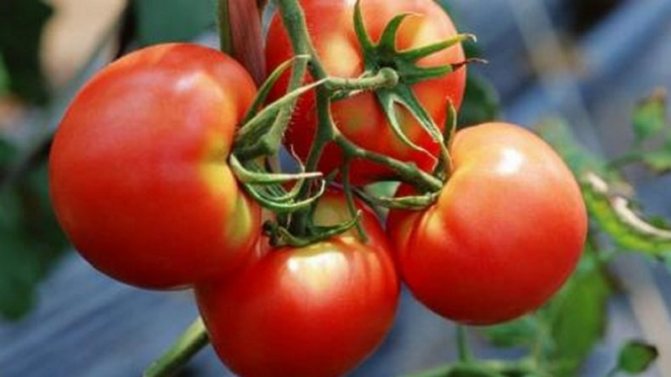

Disembarkation at the main seat
If the tomatoes grow in the greenhouse, they are transplanted to the main place in early May. If outdoors - in early June, when the threat of night frosts will pass.
Seed producers recommend forming a tomato bush into one stem, therefore, the distance between plants in a row (both in the greenhouse and outside) can be made small: 30-35 cm will be enough.
The gap between the rows is 50 cm.If you plan to keep a tomato bush in two stems, the plant will be more spreading, so the distance in both directions should be increased by 10-20 cm.
Bush formation
In the process of growth, the Red Red tomato needs the formation of a bush. The best results can be achieved if the plant is kept in one stem. To do this, you need to constantly remove all side shoots.
Some tomato growers form a tomato in two stalks - they leave one stepson below the first flower brush. A good harvest is also removed from two fruiting stems.
Garter
Red tomatoes are tall and cannot bear their own weight. This means that the plants need to be tied to the supports. When grown in a greenhouse, they are usually tied to overhead ceiling supports. Outdoors - to pegs or trellises.
For tying, use strips of fabric, braid, twine. Unnecessary nylon tights cut into strips are also suitable. They do not cut into the stem and do not injure tomatoes.
It is important that the plant is not pulled into the string along with the garter. Otherwise, when leaving (watering, feeding, pinching) there is a risk of catching a bush and pulling out the plant by the root.
Watering
Plants are watered, depending on weather conditions, 1-3 times a week. It is advisable not to use cold water - such watering slows down growth and development.
After planting in the ground in the main place, it is better to refrain from abundant watering. The less moisture the tomato receives from the soil surface at the first stages of adaptation, the better its root system will develop (the roots will tend to get moisture from the deep layers of the earth).
During the period of fruit ripening, watering is increased. The Red Red variety is not prone to cracking, so there is no need to be afraid that the quality of the fruit will deteriorate.
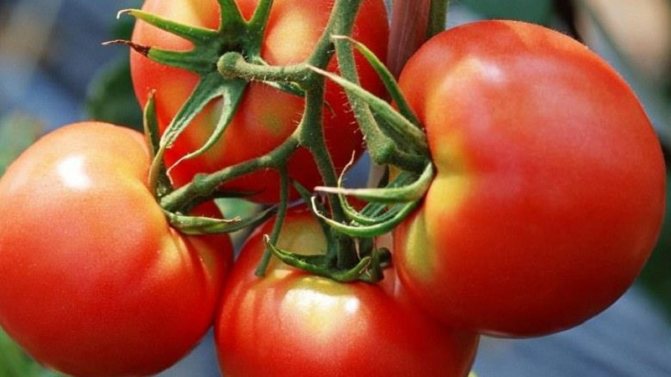

Top dressing
To obtain a large harvest, it is recommended to feed tomatoes. It is advisable to make 3 dressings. They are carried out in phases:
- budding;
- flowering;
- ripening of fruits.
Experienced tomato growers prefer to feed tomatoes in two ways:
- under the root (nutrients are introduced into the ground at the base of the plant);
- on the leaves (fertilizer in the form of a solution is sprayed onto the aerial part of the tomato bush).
The procedures alternate with each other.
A favorite fertilizer for gardeners, from which the yield increases by 15-20%, is fertilization with an aqueous solution with the addition of boric acid, iodine and ash.
The solution is not sold in gardening stores - it is not suitable for storage and loses its useful properties over time. His tomato growers cook themselves. To prepare the fertilizer, take 10 g of boric acid crystals, 10 liters of water, a bottle of alcoholic tincture of iodine (10-12 drops are needed) and 1 liter of wood ash.
Note. Iodine and boric acid can be bought at the pharmacy, ash can be scooped out of the stove or collected at a fireplace.
Boric acid crystals are poured into 1 liter of hot (from 60 degrees) water and stirred until complete dissolution. Then the hot solution is mixed with ash and iodine. Poured into 9 liters of water. The average consumption of top dressing is 0.5 liters per tomato bush. It is advisable to do top dressing when the land is watered with plain water.
Harvesting
The fruits are harvested regularly as they ripen. This contributes to the early ripening of the remaining tomatoes on the bush. You can also remove green fruits - they ripen easily.
If you regularly remove tomatoes from the bush, this gives an impetus for the appearance of new ovaries. The harvest period lasts until September.
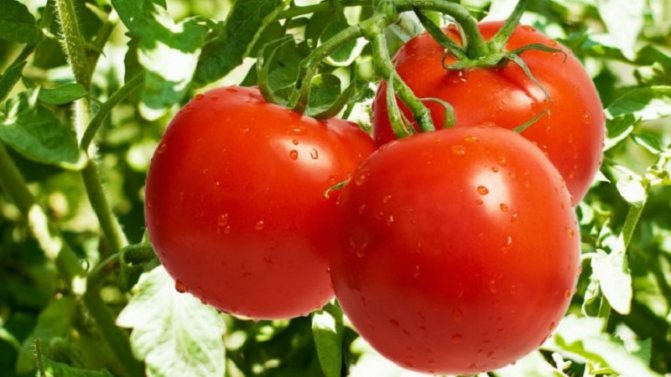

Recommendations for growing seedlings
An early harvest is obtained by seedling:
- Sowing two months before the expected date of planting in a greenhouse or open ground.
- With the appearance of 3 permanent leaves, a pick is carried out. But many vegetable growers have long abandoned this procedure and sow seeds in separate cups so as not to injure the root system during transplantation. It is noticed that diving pushes the beginning of fruiting by 7-10 days, so it is better not to dive tomatoes for an early harvest.
- The seedlings of the “red red” hybrid grow quickly - after a month and a half, a small support is needed - a twig or a bamboo stick.
- Seedlings are fed twice: after a pick and a week before transplanting. A ready-made liquid complex fertilizer is used.
Prevention of diseases and pests
Compliance with the rules of crop rotation and folk remedies for prevention will help prevent pests and diseases.
Pre-sowing tillage helps well against diseases. For example, watering the ground with a solution of copper sulfate (according to the manufacturer's instructions) before planting the plants. The variety is resistant to late blight and apical rot, it is rarely affected by them.
Of all the pests, the variety is most susceptible to aphid attacks. Garlic sprays scare her away. The solution is prepared from 200 g of garlic, infused in 4-5 liters of water for 3 hours. Spraying is carried out in dry cloudy weather.
Many pests do not like calendula, so it is recommended to plant these flowers along the edge of the tomato row.
Harvesting
Harvesting for tomatoes "Red-Red F1" is a continuous process. A lot of fruits are formed on the branches, and they ripen in stages. It is recommended not to wait until full ripening to a deep red color, since ripening inhibits the growth of fruits on the upper clusters. Vegetables are allowed to be removed from the bush and not ripe. With artificial ripening, the taste of the tomato is not lost.
Check out other indeterminate tomato varieties as well:
Tomatoes are harvested daily or every other day. This is necessary not only for the benefit of the rest of the tomatoes on the bush, but also for safety reasons. The fruits of the hybrid are heavy, and if several giants accumulate on the brush, it can break off.
To extend the shelf life, you can remove the tomatoes along with the stalk.It is recommended to harvest before the evening coolness, excluding the early morning when the dew sets. If you pick the fruits from the bush in time, you can achieve good yields and get fresh tomatoes "Red-Red F1" before autumn.
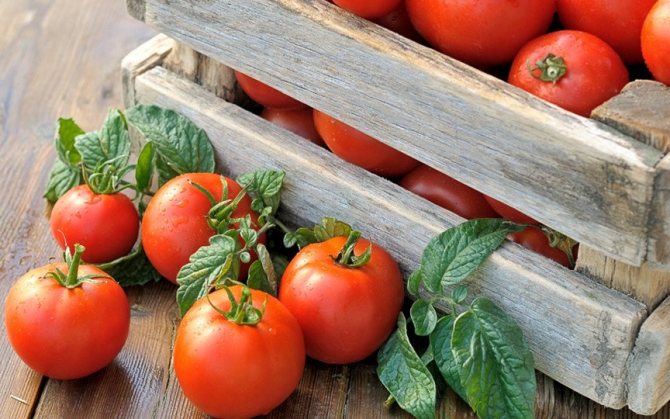

Scientists have found that tomatoes contain serotonin, which is also known as the hormone of happiness, as well as thiamine, from which our body again synthesizes serotonin. This means that tomatoes can work great as natural antidepressants. Therefore, grow "Red-Red F1", get excellent harvests of tomatoes and be happy!
Reviews of gardeners
Among the reviews about the variety, positive ones prevail. Many gardeners pay attention to the taste of the fruit. Reviews of those who have already planted a tomato with Red Red:
Valery Yu., 54 years old, Smolensk: “I planted these tomatoes as an experiment. Liked it. Massive bunches of tomatoes have grown, there are many fruits on the cluster, all calibrated. "
Zinaida Vitalievna, 62 years old, Moscow region: “There was a very nice photo on the seed package. I decided to plant it, then to marinate it whole. They turned out to be too big, not very many of them fit in the jar, there are voids between the tomatoes. Marinated in halves. I liked the fresh ones: fleshy and sweet. "
Katerina Anisko, 30 years old, Novotroitsk: “They look beautiful, round, and taste like ordinary tomatoes. They have a dense skin and keep well. "
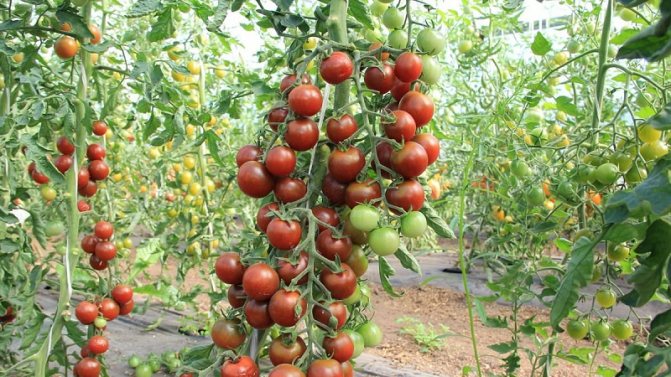

Care
Caring for the Red-Red F1 tomato does not differ from complex measures for other varieties of tomatoes: watering, periodic feeding, weeding and hilling. Each of the stages is important for obtaining the desired yield, because the seedlings quickly start growing immediately after planting.
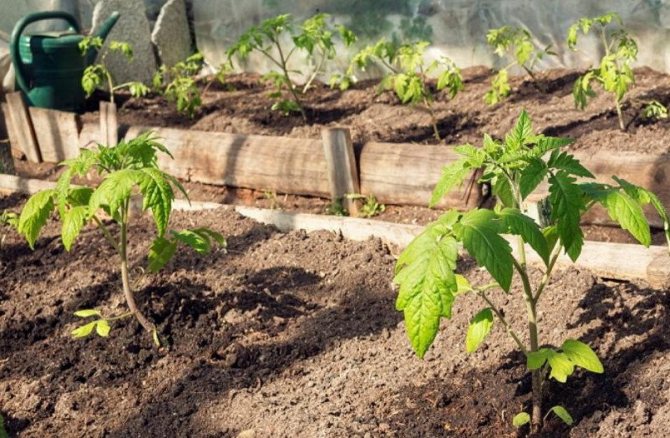

When growing tomatoes, some gardeners create special conditions for them with high temperature and humidity, which contributes to the early development of plants. However, you should be careful with the air temperature in the greenhouse. When +35 ° C is exceeded, the pollen of the hybrid becomes sterile, and you can get excellent growth and exuberant flowering of plants, but you can not wait for the ovary of the fruit.
Watering
Water the tomato "Red-Red F1" as needed when the soil dries. The amount of watering is moderate. Water intended for irrigation is preliminarily settled and heated under the sun.
In greenhouses and hotbeds, it is better to organize drip irrigation of plants. It allows you to economically use water and deliver moisture directly to the roots of tomatoes. Without drip irrigation, watering is carried out with a garden watering can, moistening only the plant roots. The event is held in the afternoon, in the late afternoon.
Advantages and disadvantages
Among the main advantages of the variety:
- good productivity;
- tasty fruits suitable for salads and canning;
- high content of sugars and vitamins in ripe tomatoes;
- the possibility of long-term storage;
- resistance to cold and drought;
- little susceptible to major diseases of tomatoes in the greenhouse.
Among the features, it is worth noting the need for the correct formation of a bush, tying and removing stepsons. Tomato variety "Red Red F1" is sensitive to fertilizing, with a lack of nutrients, the yield is greatly reduced. Another drawback common to all hybrids is the inability to collect seed from ripe tomatoes.
You can compare the yield of the variety using the data below:
| Variety name | Yield |
| Red red | 8 kg per bush |
| Lazy | 15 kg per square meter |
| Rocket | 6.5 kg per square meter |
| Summer resident | 4 kg per bush |
| Premier | 6-9 kg per square meter |
| Doll | 8-9 kg per square meter |
| Stolypin | 8-9 kg per square meter |
| Broody | 10-11 kg per square meter |
| Black bunch | 6 kg per bush |
| Fat jack | 5-6 kg per bush |
| Buyan | 9 kg per bush |

